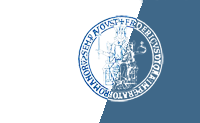Martino, Francesco (2021) A deep learning model to predict Ki-67 positivity in Oral Squamous Cell Carcinoma. [Tesi di dottorato]
Anteprima |
Testo
Martino_Francesco_34.pdf Download (42MB) | Anteprima |
| Tipologia del documento: | Tesi di dottorato |
|---|---|
| Lingua: | English |
| Titolo: | A deep learning model to predict Ki-67 positivity in Oral Squamous Cell Carcinoma |
| Autori: | Autore Email Martino, Francesco francesco.martino@unina.it |
| Data: | 2021 |
| Numero di pagine: | 42 |
| Istituzione: | Università degli Studi di Napoli Federico II |
| Dipartimento: | Scienze Biomediche Avanzate |
| Dottorato: | Scienze biomorfologiche e chirurgiche |
| Ciclo di dottorato: | 34 |
| Coordinatore del Corso di dottorato: | nome email Cuocolo, Alberto alberto.cuocolo@unina.it |
| Tutor: | nome email Staibano, Stefania [non definito] |
| Data: | 2021 |
| Numero di pagine: | 42 |
| Parole chiave: | deep learning, ki-67, digital pathology, pix2pix |
| Settori scientifico-disciplinari del MIUR: | Area 06 - Scienze mediche > MED/08 - Anatomia patologica |
| Depositato il: | 20 Dic 2021 08:30 |
| Ultima modifica: | 28 Feb 2024 11:33 |
| URI: | http://www.fedoa.unina.it/id/eprint/14351 |
Abstract
Anatomical Pathology is living its third revolution, facing a radical transformation from analogical pathology to digital pathology, with the new artificial intelligence applications becoming part of the clinical practice. Other than classification, detection, and segmentation models, the spotlight is on predictive models which may impact not only on diagnostic procedures but also on laboratory activity, reducing the usage of consumables and the turn-around time. In our study, we aimed to develop a deep learning model capable of generating a synthetic Ki-67 immunohistochemestry using H&E images as input. To develop our model, we retrieved 175 Oral Squamous Cell Carcinoma from the archives of the Pathology Unit of the University Federico II, and built four TMAs. We then generated one slide from each TMA which was in first instance stained with H&E protocol and subsequently destained and restained using anti-Ki-67 immunohistochemistry. Cores were then dearreyed and tiled to create a dataset to train a Pix2Pix model to convert H&E images to IHC. Our model resulted in realistic synthetic images, as pathologists were able to recognise the syntetic images only in half of the cases. Then, we quantified IHC positivity using QuPath, achieving high levels of concordance between real IHC and synthetic IHC. Moreover, a categorical analysis using three cutoff of Ki-67 positivity (5%, 10%, and 15%) showed high positive predicted values. Overall, although these results need be confirmed on a larger dataset in a multicentric environment, our model represents a promising tool to gather Ki-67 positivity information directly on H&E slides, reducing the laboratory demand and improving the management of patients, being also a valid opportunity for smaller hospitals which cannot keep up with the raising necessity of several immunohistochemical staining.
Downloads
Downloads per month over past year
Actions (login required)
 |
Modifica documento |




